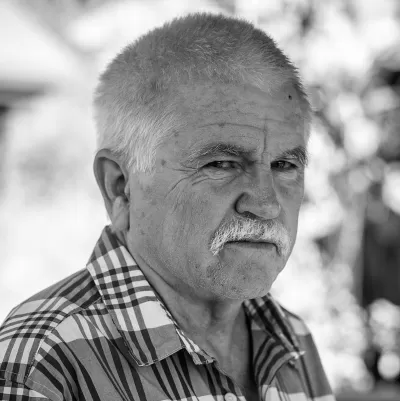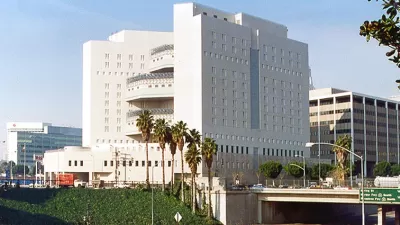Davis’ unflinching portrait of Los Angeles politics and power dynamics remains a penetrating analysis of modern city-building, who it benefits, and who it leaves behind.

Few people captured the conflicting feelings of love and frustration that Los Angeles elicits in those who experience the city more than author and cultural critic Mike Davis, who died this Tuesday. In an obituary for the Los Angeles Times, Carolina A. Miranda describes Davis’ legacy as an incisive critic and staunch defender of the complicated metropolis, whose book City of Quartz remains a seminal work in urbanism and history.
In the book, Davis laid bare the inequity and power dynamics that shape the city, exposing the dark underbelly of the City of Angels. “Released by the lefty publishing house Verso, it was 462 dense, unsparing pages about the ways in which powerful interests in Los Angeles — namely, real estate developers, aided and abetted by politicians and the Police Department — had ruthlessly molded the landscape of the city to their whim, principally at the expense of the working class and people of color, all while promoting myths about backyard living.”
But Davis was also an ardent booster for Los Angeles. City of Quartz was, for Davis, a cautionary tale rather than an indictment. Miranda ends with a quote that sums up Davis’ feelings about his work. “I love Los Angeles. How can you not see that? I suppose the book is, in the end, a failure if it betrays none of the sense of deep feeling I have about the city. But that’s where being a radical comes in — you have to rain on the parade.”
FULL STORY: Mike Davis, ‘City of Quartz’ author who chronicled the forces that shaped L.A., dies

Maui's Vacation Rental Debate Turns Ugly
Verbal attacks, misinformation campaigns and fistfights plague a high-stakes debate to convert thousands of vacation rentals into long-term housing.

Planetizen Federal Action Tracker
A weekly monitor of how Trump’s orders and actions are impacting planners and planning in America.

Chicago’s Ghost Rails
Just beneath the surface of the modern city lie the remnants of its expansive early 20th-century streetcar system.

Bend, Oregon Zoning Reforms Prioritize Small-Scale Housing
The city altered its zoning code to allow multi-family housing and eliminated parking mandates citywide.

Amtrak Cutting Jobs, Funding to High-Speed Rail
The agency plans to cut 10 percent of its workforce and has confirmed it will not fund new high-speed rail projects.

LA Denies Basic Services to Unhoused Residents
The city has repeatedly failed to respond to requests for trash pickup at encampment sites, and eliminated a program that provided mobile showers and toilets.
Urban Design for Planners 1: Software Tools
This six-course series explores essential urban design concepts using open source software and equips planners with the tools they need to participate fully in the urban design process.
Planning for Universal Design
Learn the tools for implementing Universal Design in planning regulations.
planning NEXT
Appalachian Highlands Housing Partners
Mpact (founded as Rail~Volution)
City of Camden Redevelopment Agency
City of Astoria
City of Portland
City of Laramie



























